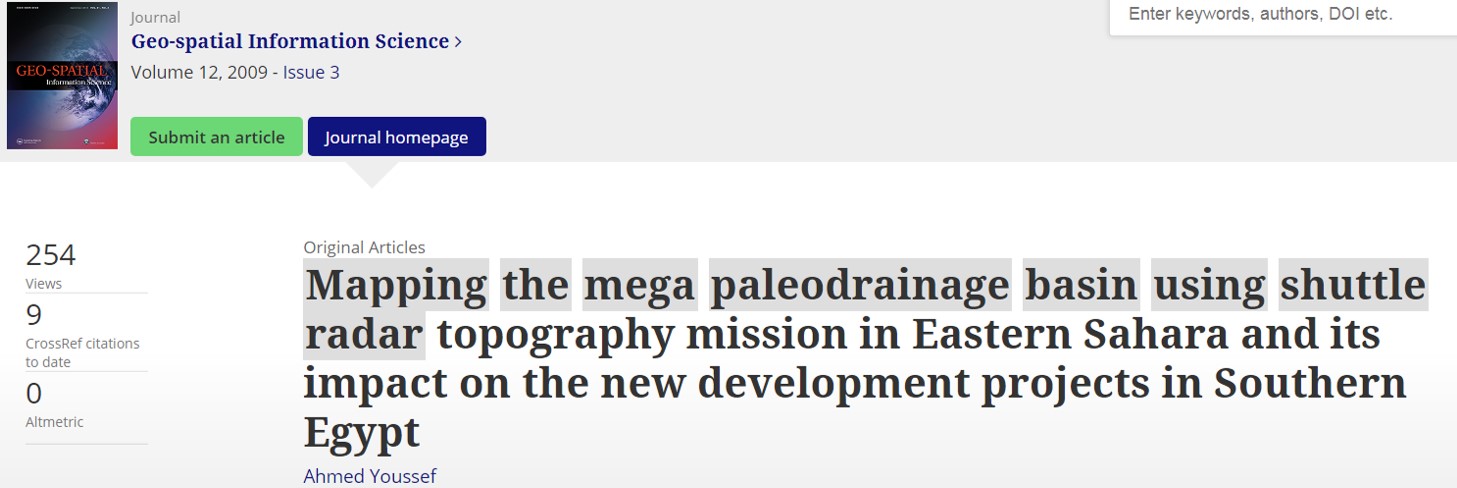In the current study, the shuttle radar topography mission (SRTM) data, with ∼90 m horizontal resolution, were used to delineate the paleodrainage system and their mega basin extent in the East Sahara area. One mega-drainage basin has been detected, covering an area of 256 000 km2. It is classified into two sub mega basins. The Uweinate sub mega basin, which is composed of four main tributaries, collected water from a vast catchment region and drained eastward from the north, west, and southwest, starting at highland areas. The first subwatershed basin is in the northern plateau, south of the Abu-Balas area, with a total catchment area of 25 045 km2. The second subwatershed is in the Gilf Kebir plateau and has a total catchment area of 38 257 km2. The third subwatershed drains from the Uweinate highlands and has a catchment area of 46 154 km2. The fourth subwatershed, which is known in literature as Wadi Mokhtafi in its upper reach and Wadi Arid in its lower reach, drains the northwestern highlands of Sudan and has a total catchment area of 28 653 km2. The Tushka sub mega basin includes one watershed that drains from the northeast highlands of Sudan and has a total catchment area of 63 019 km2. The Uweinate and Tushka sub mega basins are joined together to the North of the Tushka depression, which drains northward toward the Kharga depression. This study indicates that the Eastern Sahara Mega Basin is a closed hydrological system independent of the other drainage systems, such as the Nile hydrosystem and the Qena Valley system. The present research illustrates the capability of the SRTM data in mappingthe paleochannel networks, as well as estimate the catchment area and direction of the water flow. Finally, the study reveals that the four areas could be potentially used for different reclamation activities due to the ground water accumulations possibilities.


